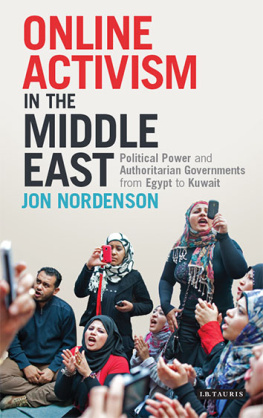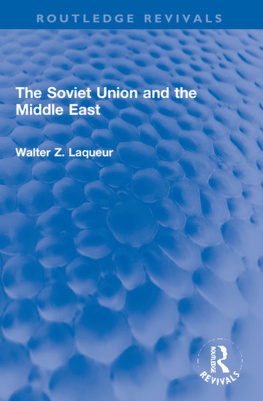Routledge Revivals
Kuwait
First published in 1985, this study, focusing on Kuwait, looks at the underlying reasons why certain political, economic and social events have taken place in the countrys history. It provides vital analysis of the political and economic issues of the country, and those that have affected it, as well as providing statistical material on all the key data of the political economy.
The book was originally published as part of the Middle East Research Institute (MERI) Reports on the Middle East which quickly established themselves as the most authoritative and up-to-date information on the state of affairs in the region.
Kuwait
MERI Report
Middle East Research Institute
First published in 1985
by Croom Helm
This edition first published in 2015 by Routledge
2 Park Square, Milton Park, Abingdon, Oxon, OX14 4RN
and by Routledge
711 Third Avenue, New York, NY 10017
Routledge is an imprint of the Taylor & Francis Group, an informa business
1985 Middle East Research Institute
The right of the Middle East Research Institute to be identified as author of this work has been asserted by him in accordance with sections 77 and 78 of the Copyright, Designs and Patents Act 1988.
All rights reserved. No part of this book may be reprinted or reproduced or utilised in any form or by any electronic, machanical, or other means, now known or hereafter invented, including photocopying and recording, or in any information storage or retrieval system, without permission in writing from the publishers.
Publisher's Note
The publisher has gone to great lengths to ensure the quality of this reprint but points out that some imperfections in the original copies may be apparent.
Disclaimer
The publisher has made every effort to trace copyright holders and welcomes correspondence from those they have been unable to contact.
A Library of Congress record exists under LC control number: 84028552
ISBN 13: 978-1-138-90214-5 (hbk)
ISBN 13: 978-1-315-69752-9 (ebk)
MERI REPORT
KUWAIT
Middle East Research Institute University of Pennsylvania
1985 Middle East Research Institute
Croom Helm Ltd, Provident House, Burrell Row,
Beckenham, Kent BR3 1AT
Croom Helm Australia Pty Ltd, First Floor,
139 King Street, Sydney, NSW 2001, Australia
British Library Cataloguing in Publication Data
Kuwait, (Men report)
1, Kuwait - Social conditions
I. University of Pennsylvania. Middle East Research
Institute II. Series
9S3'.67053 HN669.A8
ISBN 0-7099-3546-3
Croom Helm, 51 Washington Street, Dover,
New Hampshire 03820, USA
Library of Congress Cataloging in Publication Data
University of Pennsylvania. Middle East Research Institute.
MERI report, Kuwait.
1. Kuwait. 2. Kuwait Economic conditions. I. Title. 11. Title: M.E.R.I. report, Kuwait.
DS247.K8U65 1985 330.953'67053 84-28552
ISBN 0-7099-3546-3 (pbk.)
Printed and bound in Great Britain by
Antony Rowe Ltd., Chippenham
Table of Contents
The State of Kuwait, an area of about 17,818 sq km (1 sq km = 0.386 sq mi) of mostly flat desert, is in the northwestern corner of the Persian Gulf and has one of the few natural harbors (Kuwait Bay) in the northern portion of the Gulf. There are 499 km of coastline. Iraq lies to the north and northwest, Saudi Arabia to the south and southwest, and the Gulf directly to the east. Very little vegetation grows outside the populated areas. Scrub brush is found along the salt flats near the shore, and small thorn bushes are scattered throughout the interior and in the few wadis. There is a small oasis, al-Jahrah, located 96 km west of Kuwait City.
The Neutral Zone, (5,700 sq km) was partitioned between Kuwait and Saudi Arabia in 1966; revenue from oil production in the zone is shared between both countries.
The temperature is very hot in the summer, ranging from 29.7 to 45.1 C (85 to 113 F), In the winter, this ranges from 8.4 to 18.4 C (46 to 66 F), with occasional drops below freezing at night but warming up in the daytime.
Although Kuwait has an overall desert climate, there are occasional winter rains, bringing grass and small purple flowers to the desert in early spring. Annual rainfall varies between 10 and 350 mm, most of which falls within the winter months of November-March (1 mm = 0.039 inch). Sandstorms are frequent in the summer. Humidity, although somewhat lower than in neighboring Bahrain, aggravates the severe summer heat, making air conditioning a necessity.
The estimated population of Kuwait. according to the 1980 census, was 1.36 million. Of this number, approximately 41.5 percent are Kuwaiti citizens (officially defined as those present in Kuwait prior to 1920, their descendants, and a relatively small number of persons given Kuwaiti citizenship).
Both the Kuwaiti and non-Kuwaiti populations have grown rapidly; the Kuwaiti population has one of the highest growth rates in the world (about 4.5 percent from 1975 to 1980). The non-Kuwaiti population has an unusually high proportion of young and middle-aged adult males, many in construction and service jobs. The foreign population consists primarily of workers (sometimes accompanied by their families) who are in Kuwait to take advantage of the relatively high wages and the shortage of labor in all areas of employment. Jobs held by immigrants range from manual labor to important government and managerial positions. Palestinians and Jordanians make up about 22 percent of the total population; Egyptians, 4 percent; other Arabs, about 15 percent; Iranians, Pakistanis, and Indians, about ten percent; and the remaining two percent come from Eastern and Western Europe, the Americas, and the Far East.
The population is relatively young; 58.3 percent are less than 25 years old. The population density is 80.2 per sq km.
Except for the natural source of drinking water at Raudhatain, 96 km north of the capital, Kuwait has virtually no water resources. It depends upon desalination techniques to provide drinking water and water for industry. Some groundwater reservoirs have been found but most of these are brackish.
Arable land is scarce, representing only about one percent of the total area. The lack of water, combined with the poor quality of the soil, makes agriculture almost impossible, except for small plots.
Before the discovery of oil, Kuwaitis looked to the sea for fishing, pearling and maritime trading for their livelihood. In the past, fresh water was obtained from springs under the sea by divers who would trap it in jugs and bring it to the surface. The sea is an important source for Kuwait of shrimp and fish, which are sold for local consumption and export. In the late 1970s Kuwaiti officials became concerned about industrial pollution in the Gulf and permanent damage to the shrimp and fish habitats. Kuwait has pressed for agreement on action among the Gulf states, although no such agreement has yet been reached. The government has for several years funded research and experimentation in commercial shrimp farming. Kuwait has also experimented for some time with hydroponics and animal husbandry in order to reduce dependence on imported foodstuffs. Fishing and agriculture in Kuwait require government support to survive; neither industry has been able to attract many Kuwaitis due to the more lucrative opportunities in the petroleum and commercial sectors.







